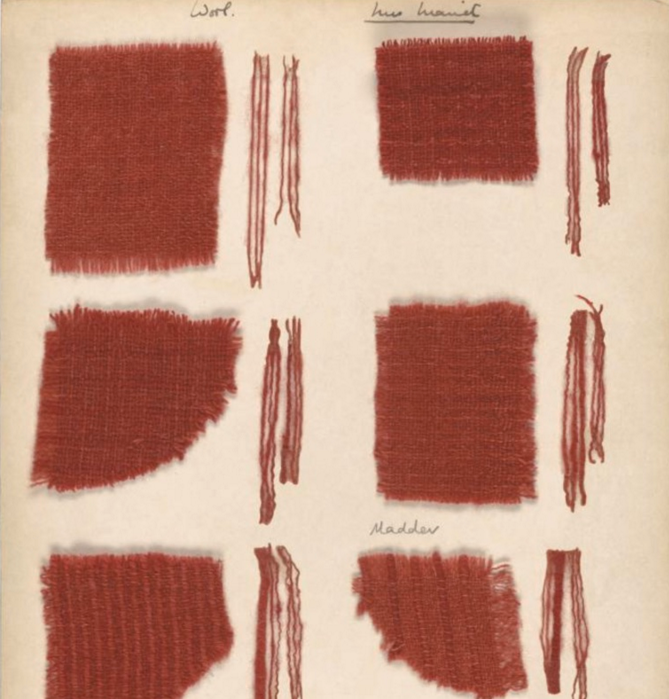Ethel Mairet
Note before reading: This blog was written in 2017, when I was studying for my MA (hence the Harvard referencing!). Where needed, I have edited these posts to correct any factual inaccuracies. This post was last edited Jan 2025.
I have just read 'A Book on Vegetable Dyes' by Ethel Mairet, published in 1916. A renowned weaver and natural dyer, Mairet wrote the book at a time when chemical dyes had been developed and become well-used. She laments in her poetic introduction that:
"It has been forgotten that strong and beautiful colour, such as used to abound in all every day things, is an essential to the full joy of life." (p1)
The book is aimed at the craftsperson who wishes to create their own textile colours through the use of vegetable dyes, and gathers together a wealth of historical recipes from around the British Isles and the greater world. The recipe chapters are divided into colour, making it easy to reference if you have a specific colour you wish to achieve.
I found the chapter on mordants interesting, as it discusses the use of alum as the most popular mordant, stating that it has been used for many years all over the world. It was also interesting to discover that the term mordant comes from the French "mordere, to bite" (p25).
She has a very anti-scientific view of dyeing in textiles, saying that:
"Dyeing is an art; the moment science dominated it, it is an art no longer, and the craftsman must go back to the time before science touched it, and begin all over again." (p8)

Now I have some experience of creating colour with natural dyes, rather than just selecting the desired colour from a yarn shade card and waiting for it to arrive in the post, I agree with her sentiment somewhat. I feel I have a greater connection to the raw materials used in my textile practice.
Mairet's archive is situated in Ditchling Museum of Art and Craft, which I am now very keen to visit. The image to the left is a page from the extensive volumes of her dye experiments, featured in an exhibition which I frustratingly missed earlier this year!
Mairet's book provided excellent historical context to my research, as well as containing recipes that I can still use today in my own practice. The bibliography, unsurprisingly, is a wealth of further reading, including essays by William Morris.
References:
Ditchling Museum of Art and Craft. (2016) Dyeing Now: Contemporary Makers Celebrate Ethel Mairet’s Legacy. [Online] Available from: http://www.ditchlingmuseumartcraft.org.uk/event/dyeing-now/ [Accessed 28 November 2017].
Mairet, E. (1916) A Book on Vegetable Dyes. [e-book] Hammersmith. Available from: https://archive.org/details/bookonvegetabled00mairrich [Accessed 28 November 2017].
Selvedge. (2017) Following in the Footsteps of Ethel Mairet. [Online] Available from: https://www.selvedge.org/blogs/selvedge/following-in-the-footsteps-of-ethel-mairet
University of Brighton. http://arts.brighton.ac.uk/collections/design-archives/resources/women-designers/ethel-mairet [Accessed 28 November 2017].
